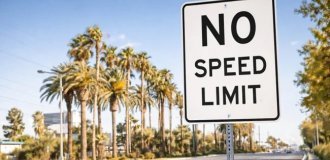The terrible consequences of the oil spill in the Gulf of Mexico (20 photos)
The environmental disaster in the Gulf of Mexico continues. Numerous attempts to stop the oil leak were in vain. Oil continues to flow into the Gulf. Animals are dying. Ecologists from the Pelican mission, who conduct research in the region, discover giant oil accumulations at great depths, the depth of which reaches 90 meters. “Deep-sea spots” are dangerous because they deplete the supply of oxygen necessary for living organisms. Now its level has already decreased by thirty percent. “If this continues, in a couple of months the flora and fauna of the bay may die,” say environmentalists.


1) An American brown pelican (left) stands next to its pure-bred brethren on one of the islands in Barataria Bay. Numerous bird colonies nest on this island. It is home to thousands of brown pelicans, herons and roseate spoonbills, many of which are currently affected by the oil spill. (Photo by John Moore/Getty Images)

2) Brown pelicans fly over the oil boom that surrounds their island in Barataria Bay. The pelican is a symbol of the state of Louisiana, but in the 60s of the last century these birds practically disappeared from the region due to the widespread use of insecticides. However, later the population of these birds was able to be revived. (Photo by John Moore/Getty Images)

3) Dead fish on the beach of Grand Isle, Louisiana. The British Petroleum company uses chemical reagents – so-called. dispersants that break down oil. However, their use leads to water poisoning. Dispersants destroy the circulatory system of fish, and they die from excessive bleeding. (Photo by John Moore/Getty Images)

4) An oil-covered carcass of a northern gannet on the beach of Grand Isle, Louisiana. The state's coast was the first to encounter the oil slick and suffered the most from this disaster. (REUTERS/Sean Gardner)

5) Biologist Mandy Tumlin with the Louisiana Department of Wildlife and Fisheries pulls the carcass of a dolphin from the water off the coast of Grand Isle, Louisiana. The body will be autopsied to determine the exact cause of death. (Carolyn Cole/Los Angeles Times/MCT)

6) A bird flies over an oil slick in the waters of the Gulf of Mexico off the island of East Grande Terre, which is located off the coast of Louisiana. The amount of oil that is located in the gulf at depths is several times greater than that that rises to the surface of the water. (AP Photo/Charlie Riedel)

7) An Atlantic gull coated in a thick layer of oil bobs in the surf off East Grande Terre Island, Louisiana. (Photo by Win McNamee/Getty Images)

8) British Petroleum prohibits workers from distributing photographs of dead animals to the press. (Photo by Win McNamee/Getty Images)

9) An oil-covered dead fish floats off the coast of East Grande Terre Island on June 4, 2010 near East Grande Terre Island, Louisiana. Fish eat plankton contaminated due to the use of dispersants, and toxins spread throughout the food chain. (Photo by Win McNamee/Getty Images)

10) A bird corpse covered in oil floats in the surf off East Grande Terre Island on June 3. Environmentalists believe that millions of different migratory birds that winter on the shores of the Gulf of Mexico will suffer, and the decline in the population of sea turtles, bluefin tuna and other species of marine animals will hit the ecosystem of the entire Atlantic Ocean. (AP Photo/Charlie Riedel)

11) Hermit crabs in reddish-brown oil off the coast of Dauphin Island, Alabama. It is expected that the accident will be completely eliminated only by August, and cleaning the Gulf of Mexico from oil may take years. (AP Photo/Mobile Press-Register, John David Mercer)

12) Pelican eggs stained with oil in a nest on bird island in Barataria Bay, where thousands of brown pelicans, terns, gulls and roseate spoonbills nest. (AP Photo/Gerald Herbert)

13) A dying heron chick sits in the mangroves on an island in Barataria Bay. (AP Photo/Gerald Herbert)

14) The oil-covered body of a dead dolphin lies on the ground in Venice, Louisiana. This dolphin was spotted and picked up while flying over the southwest area of the Mississippi River. "When we found this dolphin, it was literally full of oil. Oil was just pouring out of it." - say contract workers who help oil workers clean the shore. (AP Photo/Plaquemines Parish Government)

15) A brown pelican, covered in a thick layer of oil, swims in the surf off the coast of East Grande Terre Island, Louisiana. (Photo by Win McNamee/Getty Images)

16) Birds are dying en masse in Louisiana. Environmentalists are trying to save the injured birds - the surviving individuals, mainly pelicans, are urgently taken to a veterinary rehabilitation center. (Photo by Win McNamee/Getty Images)

17) Now oil is being collected on the beaches of Florida. US authorities prohibit fishing in new territories. A third of the US fishing area in the Gulf of Mexico has already been closed. (Photo by Win McNamee/Getty Images)

18) A dead turtle lies on the shore in Bay St. Louis, Mississippi. (Photo by Joe Raedle/Getty Images)

19) Dead croaker in the surf in Waveland, Mississippi. (Photo by Joe Raedle/Getty Images)

Daneen Birtel, left, of the Tri-State Bird Rescue and Research Center, Patrick Hogan, right, of the International Bird Rescue Research Center, and Christina Schillesy wash an oiled pelican in Buras, Louisiana, June 3. The center for victims of oil pollution has washing vats, special drying rooms and a small pool in which birds that miraculously escaped death learn to swim again. (AP Photo/Gerald Herbert)





















